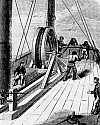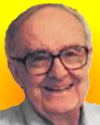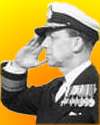
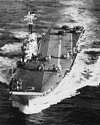
Rear-Admiral Dennis Cambell was an English naval aviator, test pilot and inventor of the angled flight deck, with axis rotated ten degrees to port from the centre-line of an aircraft carrier. This outstandingly simple idea gave pilots a second chance when landing. It allowed overshooting off the port bow, reapplying throttle and staying airborne. Previously, a bad landing on a straight deck could mean crashing into the barrier and aircraft parked at the far end. Campbell’s idea saved many lives and millions in costs. The U.S. Navy first tried the idea and made structural alterations to the carrier Antietam. The British Admiralty, impressed by U.S. test results, then converted their new large carrier Ark Royal. Cambell was appointed as Captain.«
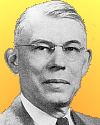
Born 13 Nov 1893; died 23 Oct 1986 at age 92.
Edward Adelbert Doisy was an American biochemist who shared (with Henrik Dam) the 1943 Nobel Prize for Physiology or Medicine for his isolation and synthesis of vitamin K, a substance that encourages blood clotting (1939), used in medicine and surgery. With the embryologist Edgar Allen (1922-34), he developed assay techniques that facilitated research on sex hormones. Doisy and his associates isolated the sex hormones estrone (theelin, 1929; the first estrogen to be crystallized), estriol (theelol, 1930), and estradiol (dihydrotheelin, 1935). In 1936-39 he isolated two forms of the vitamin, (K1 from lucerne seed and K2 from fish meal, in a pure crystalline form), determined their chemical structures, and synthesized the vitamin.«
Edward Adelbert Doisy was an American biochemist who shared (with Henrik Dam) the 1943 Nobel Prize for Physiology or Medicine for his isolation and synthesis of vitamin K, a substance that encourages blood clotting (1939), used in medicine and surgery. With the embryologist Edgar Allen (1922-34), he developed assay techniques that facilitated research on sex hormones. Doisy and his associates isolated the sex hormones estrone (theelin, 1929; the first estrogen to be crystallized), estriol (theelol, 1930), and estradiol (dihydrotheelin, 1935). In 1936-39 he isolated two forms of the vitamin, (K1 from lucerne seed and K2 from fish meal, in a pure crystalline form), determined their chemical structures, and synthesized the vitamin.«
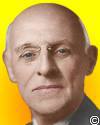
Born 13 Nov 1866; died 21 Sep 1959 at age 92. quotes
American educator who played a major role in the introduction of modern medical and science education to American colleges and universities. Founder and director of a progressive college- preparatory school in Louisville (1890-1904), Flexner issued an appraisal of American educational institutions (The American College: A Criticism; 1908) that earned him a Carnegie Foundation commission to survey the quality of the 155 medical colleges in the U.S. and Canada. His report (1910) had an immediate and sensational impact on American medical education. Many of the colleges that were severely criticized by Flexner closed soon after publication of the report; others initiated extensive revisions of their policies and curricula.
American educator who played a major role in the introduction of modern medical and science education to American colleges and universities. Founder and director of a progressive college- preparatory school in Louisville (1890-1904), Flexner issued an appraisal of American educational institutions (The American College: A Criticism; 1908) that earned him a Carnegie Foundation commission to survey the quality of the 155 medical colleges in the U.S. and Canada. His report (1910) had an immediate and sensational impact on American medical education. Many of the colleges that were severely criticized by Flexner closed soon after publication of the report; others initiated extensive revisions of their policies and curricula.
Iconoclast: Abraham Flexner and a Life in Learning, by Thomas Neville Bonner. - book suggestion.
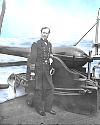
Born 13 Nov 1809; died 12 Jul 1870 at age 60. quotes
American inventor of the smooth-bore cannon that was, from its shape, familiarly known as the “soda-water bottle.” The shape resulted from a design in which the thickness of metal was varied to match the differences in internal pressure occurring when the cannon was fired. The pressures were determined by boring holes in the walls of the gun and inserting as gauges such objects as pistons or musket balls. He developed the weapons primarily for use on small boats that patrolled the waterways. His iron smoothbores were adopted in 1850 (9-inch gun) and 1851 (11-inch gun). Although designed for use against wooden ships, the iron-clad Monitor class ships carried two of these guns in their turrets, which were replaced by the 15-inch Dahlgrens in 1862.
American inventor of the smooth-bore cannon that was, from its shape, familiarly known as the “soda-water bottle.” The shape resulted from a design in which the thickness of metal was varied to match the differences in internal pressure occurring when the cannon was fired. The pressures were determined by boring holes in the walls of the gun and inserting as gauges such objects as pistons or musket balls. He developed the weapons primarily for use on small boats that patrolled the waterways. His iron smoothbores were adopted in 1850 (9-inch gun) and 1851 (11-inch gun). Although designed for use against wooden ships, the iron-clad Monitor class ships carried two of these guns in their turrets, which were replaced by the 15-inch Dahlgrens in 1862.
Died 13 Nov 2010 at age 84 (born 18 Jun 1926). quotes
American astronomer who (with Thomas A. Matthews) discovered, in 1960, the first optical identification of a quasi-stellar radio source (quasar), a star-like object that is a strong emitter of radio waves. Although a strange source of radio emission, in visible light, it looked like a faint star. Yet this object was emitting more intense radio waves and ultraviolet radiation than a typical star. more
American astronomer who (with Thomas A. Matthews) discovered, in 1960, the first optical identification of a quasi-stellar radio source (quasar), a star-like object that is a strong emitter of radio waves. Although a strange source of radio emission, in visible light, it looked like a faint star. Yet this object was emitting more intense radio waves and ultraviolet radiation than a typical star. more

Died 13 Nov 1999 at age 91 (born 11 Feb 1908).
English geologist and explorer who initiated and led (with Sir Edmund Hillary) the Commonwealth Trans-Antarctic Expedition of 1957-58. In 1929 and 1930-31, Fuchs participated as a geologist on expeditions to East Greenland and the East African lakes. In 1958 Fuchs's 12-man party completed the first land journey across Antarctica in 99 days despite severe hardships, travelling 2,500 miles (4,000 kilometres) from the Filchner Ice Shelf to McMurdo Sound. Along the way a substantial scientific programme had been accomplished, including seismic soundings and a gravity traverse. The findings of the expedition confirmed earlier theories that a single continent exists beneath the Antarctic polar ice sheet.
English geologist and explorer who initiated and led (with Sir Edmund Hillary) the Commonwealth Trans-Antarctic Expedition of 1957-58. In 1929 and 1930-31, Fuchs participated as a geologist on expeditions to East Greenland and the East African lakes. In 1958 Fuchs's 12-man party completed the first land journey across Antarctica in 99 days despite severe hardships, travelling 2,500 miles (4,000 kilometres) from the Filchner Ice Shelf to McMurdo Sound. Along the way a substantial scientific programme had been accomplished, including seismic soundings and a gravity traverse. The findings of the expedition confirmed earlier theories that a single continent exists beneath the Antarctic polar ice sheet.

Died 13 Nov 1998 (born 1910).
American inventor who created a number of games and toys, most notably the Slinky Dog and the Slinky Train pull toys based on the already popular Slinky in the 1950s. Sixty years later, Slinky Dog was featured in the Toy Story movies. Malsed created over two dozen toys and games, including a board game based on Roman numerals and Fisher-Price Snap-Lock Beads. The irregularly shaped interlocking beads, intended as play jewelry for children, wisely were made too big to fit in an infant’s mouth, to avoid the risk of choking.«
American inventor who created a number of games and toys, most notably the Slinky Dog and the Slinky Train pull toys based on the already popular Slinky in the 1950s. Sixty years later, Slinky Dog was featured in the Toy Story movies. Malsed created over two dozen toys and games, including a board game based on Roman numerals and Fisher-Price Snap-Lock Beads. The irregularly shaped interlocking beads, intended as play jewelry for children, wisely were made too big to fit in an infant’s mouth, to avoid the risk of choking.«
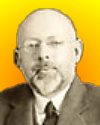
Died 13 Nov 1953 at age 71 (born 31 Jul 1882).
Herbert Eugene Ives was an American physicist and inventor of transmission of mechanical video pictures. Research into a television process by the AT&T Co. at Bell Laboratories, New York was under the direction of Dr. Herbert E. Ives. On 7 Apr 1927, live images of Commerce Secretary Hoover were transmitted in the first successful long distance demonstration of television, sent from Washington D.C. to New York, over long distance wires. On 27 June 1929 the first public demonstration of color TV showed images are a bouquet of roses and an American flag using a mechanical system was used to transmit 50-line color television images between New York and Washington. A two-way video telephone was first demonstrated in 1930 by Ives in New York City.
Herbert Eugene Ives was an American physicist and inventor of transmission of mechanical video pictures. Research into a television process by the AT&T Co. at Bell Laboratories, New York was under the direction of Dr. Herbert E. Ives. On 7 Apr 1927, live images of Commerce Secretary Hoover were transmitted in the first successful long distance demonstration of television, sent from Washington D.C. to New York, over long distance wires. On 27 June 1929 the first public demonstration of color TV showed images are a bouquet of roses and an American flag using a mechanical system was used to transmit 50-line color television images between New York and Washington. A two-way video telephone was first demonstrated in 1930 by Ives in New York City.
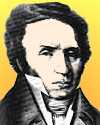
Died 13 Nov 1802 at age 56 (born 7 Mar 1746).
French explorer, botanist and silviculturist who wrote the first book on the forest trees of America. After studying under Bernard de Jussieu, beginning in 1779, he began a series of explorations searching for and classifying new species of plants in England, France and the Pyrenees. Becoming French Consul in Persia led to full-time botanical explorations there (1782-85). Next, he travelled in North America for the French government to send back tree species suitable to transplant for naval shipbuilding. Jefferson provided him with letters of introduction as a scientist. In 1796, he lost notes and specimens in a shipwreck off Egmont, Holland. In 1801, while exploring Madagascar his health failed from the exertion and he died of a tropical fever.
French explorer, botanist and silviculturist who wrote the first book on the forest trees of America. After studying under Bernard de Jussieu, beginning in 1779, he began a series of explorations searching for and classifying new species of plants in England, France and the Pyrenees. Becoming French Consul in Persia led to full-time botanical explorations there (1782-85). Next, he travelled in North America for the French government to send back tree species suitable to transplant for naval shipbuilding. Jefferson provided him with letters of introduction as a scientist. In 1796, he lost notes and specimens in a shipwreck off Egmont, Holland. In 1801, while exploring Madagascar his health failed from the exertion and he died of a tropical fever.
Died 13 Nov 1460 at age 66 (born 4 Mar 1394).
Portuguese prince and navigator.
Portuguese prince and navigator.
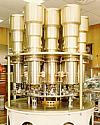
In 1998, the discovery of the 1,000th pulsar in our galaxy was announced in a press release by the Jodrell Bank Observatory, University of Manchester, using the 64-meter Parkes Radio Telescope in New South Wales, Australia. A “multibeam” receiver was installed on the telescope in early 1997. This allowed the astronomers from England, Australia, United States, and Italy to find pulsars much faster than before. On average, they found a new pulsar in every hour of observing. By this date, the researchers had found more than 200 pulsars and they expected to find another 600 more before the survey ended. The “multibeam” receiver used consists of 13 hexagonally arranged receivers that allow simultaneous observations.
In 1971, Mariner-9, the first man-made object to orbit another planet, entered Martian orbit. The mission of the unmanned craft was to return photographs mapping 70% of the surface, and to study the planet's thin atmosphere, clouds, and hazes, together with its surface chemistry and seasonal changes.
In 1946, artificial snow from a natural cloud was produced over Mount Greylock, Mass., for the first time in the U.S. An airplane spread small pellets of dry-ice (frozen carbon dioxide) for three miles at a height of 14,000 ft. Although the snow fell an estimated 3,000 feet, it evaporated as it fell through dry air, and never reached the ground. The experiment was carried out by Vincent J. Schaefer of the General Electric Company. Earlier the same year, he had produced snow in a cold chamber, on 12 Jul 1946.

In 1930, the Rotolactor, invented by Henry W. Jeffries, was housed in the lactorium of the Walker Gordon Laboratory Company, Inc., at Plainsboro, N.J. This was a 50-stall revolving platform that enabled the milking of 1,680 cows in seven hours by rotating them into position with the milking machines. A Rotolactor was displayed at the 1939 New York World's Fair as part of the "Dairy World of Tomorrow," exhibit in the Borden building. The glass-enclosed revolving Rotolactor platform carried 150 pedigreed cows were washed, dried, and mechanically milked twice daily. A favorite attraction of the Food Zone, the Rotolactor epitomized how technology advanced the production of such a widely-used product as milk.
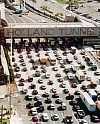
Toll plaza
In 1927, the Holland Tunnel opened for vehicular traffic as the first twin tube subaqueous vehicular tunnel in the U.S. It joined Jersey City, N.J. and New York City, N.Y. The day before, after an opening ceremony, in the next hour 20,000 people walked the 9,250 feet length of the tunnel from shore to shore, of which 5,480-ft runs under the river. Named after its engineer, Clifford Holland, the tunnel carries 1,900 vehicles per hour. The air in the tubes is changed 42 times an hour, at the rate of 3,761,000 cubic feet per minute. The first subaqueous highway single tube tunnel in the U.S. was the 1,520-ft long Washington Street Tunnel beneath the Chicago River in Chicago, Illinois, which was first authorized 17 Jul 1866, though it did not carry automobile traffic until 1911.
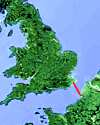
In 1855, a proposal for a tunnel under the English Channel was reported in the New York Daily Times, which, according to French engineer M. Loèpold Favre, would in five years connect Boulogne to Dover. The 18½ mile (30-km) tunnel under the Channel would also need about 1½ mile (2-km) under the shores for each approach at the ends. Excavated at no less than 82-ft (25-m) below the sea bed, the tunnel would be lined with a double arch: one of granite and impermeable cement and an inner arch of thin, iron plates with perforations to reveal even slight leakage. Instead of smoke-producing locomotives, an atmospheric railway using a compressed air tube would carry passengers and freight such as coal. Ventilation shafts would rise above the highest water level in islands formed by excavated rock.«
more
